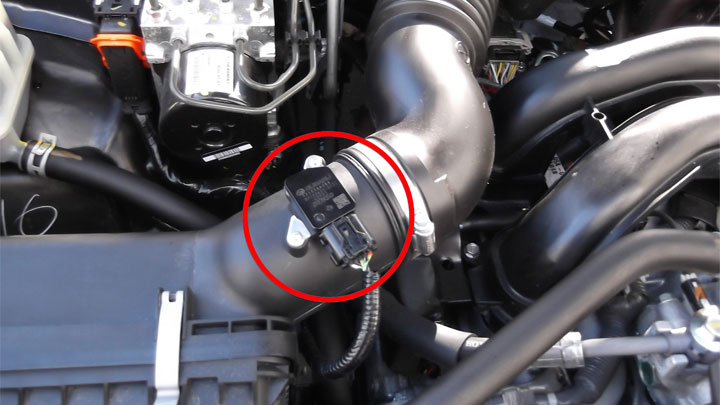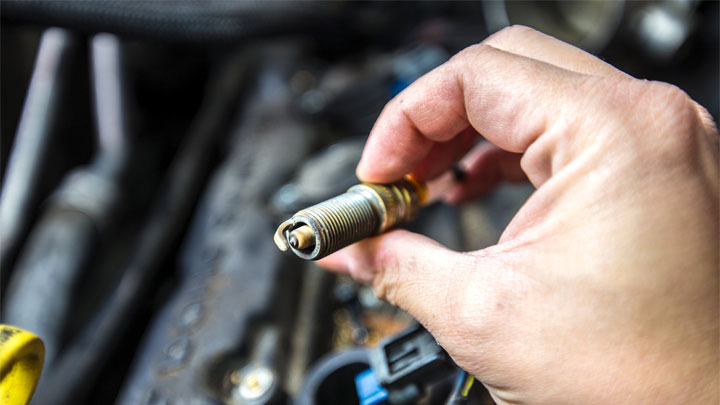Last Updated on December 12, 2022
Today’s vehicles operate at a far more efficient rate than ever before. This is accomplished through the use of a complex network of sensors and control modules, which prove capable of relaying and interpreting multiple streams of input simultaneously. Calculations are then made to ensure that each respective combustion cycle goes off without a hitch.
However, at the end of the day, even the most complex of engines still require the same basic inputs to sustain the continued operation. These inputs, of course, include fuel, intake air, properly-timed spark, and compression. The only difference between modern engines and those of yesteryear is that computer controls are now used to quantify these essential inputs.
For example, modern internal combustion engines utilize MAF (Mass Air Flow) sensors to measure the volume of air being directed through the intake tract. The resulting feedback is used to formulate a number of critical calculations, unless, of course, an unanticipated issue were to arise.
In the event that this was to occur, a sensor specific trouble code, such as DTC P0100 would likely be stored. Read on to learn more about DTC P0100, as well as how to address such issues, should they arise in the future.
What Does Code P0100 Mean?
As stated, today’s engines now utilize specialized Mass Air Flow sensors to detect and record the volume of air being directed into the intake tract. In most cases, this sensor is found inline between an engine’s air filter housing, and throttle body. Some vehicle’s actually incorporate an intake air temperature sensor within this unit as well.
It is important to mention, however, that a MAF sensor does not measure the entire volume of air being directed into an engine’s intake tract, but rather a relatively small sample quantity. An engine’s management software is then responsible for calculating the exact volume of intake-bound air being fed to the system’s throttle body.
Feedback from the MAF sensor is extremely valuable, as it is a key input used in determining the correct fuel rate for each respective cylinder bank. Without reliable MAF sensor feedback, fuel system efficiency suffers as a whole, leading to a host of drivability-related anomalies.
In the case of diagnostic fault code P0100, an engine’s management software has determined that feedback is provided by the Mass Airflow sensor is irrational, erratic, or out of range. As a result, this management software falls back on the use of preset failsafe values, in an attempt to sustain engine operation.
Related: Code P0101, Code P0102, Code P0103
Symptoms of Code P0100

Diagnostic fault code P0100 is often accompanied by a host of secondary symptoms, some of which tend to be more severe or noticeable than others. Learning to recognize these individual symptoms can be imperative when attempting to remedy the issue at hand.
The following are several of the most common symptoms associated with diagnostic fault code P0100.
- Illuminated check engine light
- Erratic engine operation
- Intermittent stalling
- Hesitation under load
- Reduced fuel economy
- Starting difficulties
- Excessive exhaust smoke
Causes of Code P0100

Diagnostic fault code P0100 can be caused by a host of underlying issues, many of which often prove relatively difficult to pinpoint. However, by understanding the potential causes of this specific fault code, you can often restore your vehicle to efficient operation much faster than you might have otherwise thought possible.
The following are a number of the most common causes of DTC P0100.
- Faulty MAF sensor
- Contaminated MAF sensor
- MAF sensor circuit electrical issues
- Unmetered intake airflow
Is Code P0100 Serious?
Diagnostic fault code P0100 is generally considered to be moderately severe in nature. Though a vehicle will typically remain operable when DTC P0100 is set, driveability is likely to be adversely affected. Some of the most serious of these driveability-related symptoms include stalling, starting difficulties, and erratic engine operation.
In many cases, symptoms related to diagnostic fault code P0100 will first appear to be relatively minor in scope, only to increase in severity over time. For this reason, it is important to remember that little good will come from continuing to operate a vehicle with an active P0100 diagnostic fault code.
In any event, the root cause of a vehicle’s P0100 DTC should be thoroughly diagnosed and repaired at the first available opportunity. Doing so will prevent further issues from arising, while also mitigating the risk of experiencing a stall while in the flow of traffic.
If you don’t feel 100% confident in your DIY repair ability, you should make an appointment with a trusted service center as soon as possible.
How to Fix Code P0100

The following steps can be followed to assist in diagnosing and repairing the root cause of your vehicle’s P0100 diagnostic fault code. As always, be sure to consult a good service manual for your particular model of vehicle, before attempting any such repairs.
#1 – Check For Additional DTCs
Before beginning the diagnostic process, check for the presence of any additional DTCs using a quality scan tool. Any such DTCs should be thoroughly diagnosed and repaired before proceeding.
#2 – Perform Visual Inspection
Begin by carefully inspecting your engine’s MAF sensor for signs of external damage, including compromised connectors or damaged wiring. Repair any underlying defects that become evident during an inspection.
#3 – Check For Damage To Intake Tract
Next, check the condition of your engine’s intake ductwork, carefully inspecting for cracks or fractures. Also, ensure that all related clamps are tight. If your engine’s air filter is noticeably dirty, now is also an excellent time to initiate a replacement.
#4 – Clean MAF Sensor
If DTC P0100 persists, carefully clean your engine’s MAF sensor using only approved cleaning products.
#5 – Test For Vacuum Leaks
It might also be necessary to check for the presence of any downstream vacuum leaks, which can cause erroneous MAF sensor feedback. Remedy any issues found during this step before proceeding.
#6 – Verify All Circuit Inputs/Outputs
Finally, check for the presence of suitable reference voltage and ground inputs at your vehicle’s MAF sensor, while comparing results to values specified by your vehicle’s manufacturer.
The presence of all correct inputs, without substantiated output, would call a vehicle’s MAF sensor into question.




